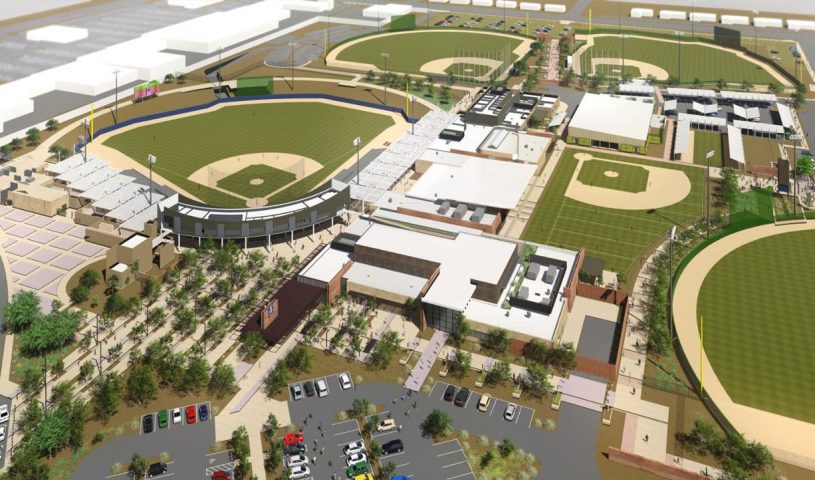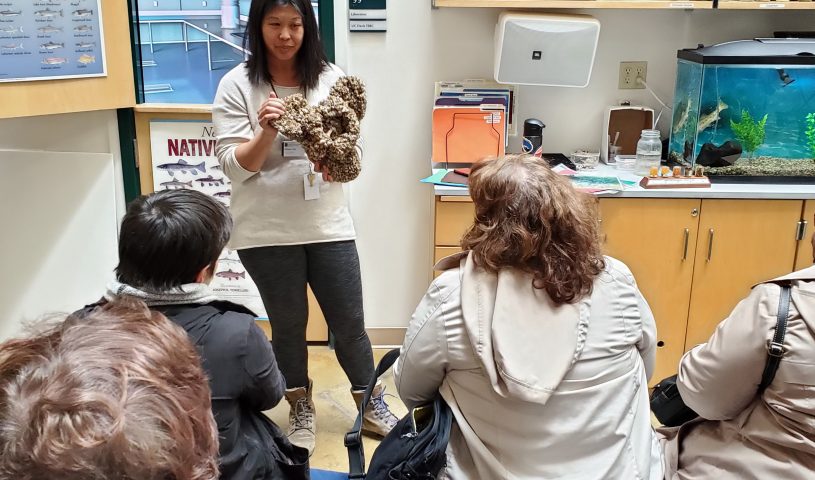Phoenix recognized for landmark public/private sports partnership
 Partnership between the City of Phoenix and the Milwaukee Brewers has directly led to community revitalization. Image: Milwaukee Brewers rendering
Partnership between the City of Phoenix and the Milwaukee Brewers has directly led to community revitalization. Image: Milwaukee Brewers rendering
Phoenix flipped the paradigm of pro sports partnerships in Arizona by securing a massive private investment from a professional sports team to fund renovations of a city park located in a community that could substantially benefit from revitalization.
The project entailed a major Spring Training baseball stadium renovation, enhanced shade and landscaping, and additional community benefit – all in a city park. Surrounded by municipalities that invested heavily in sports facilities for the resulting economic development and community activation in suburban locations, Phoenix bucked a national trend.
That revitalization effort earned the city, which showcased the initiative during the Transforming Local Government Conference’s Innovation Showcase, a 2019 Outstanding Achievement award.
Outstanding Achievement
Faced with ageing public infrastructure, limited government resources, a professional sports team – Major League Baseball (MLB)’s Milwaukee Brewers, who have held Spring Training in Phoenix since 1998 – with an option to relocate, and a part of town that has not seen significant investment in a long time, the City of Phoenix was staring down a variety of serious challenges.
Could all these community concerns be addressed through a single innovation, without raising taxes or making sacrifices elsewhere? The answer for Phoenix was yes, as the city leveraged its partnerships to deliver long-term benefit to the inner city without abandoning a sports facility from the 1990s. Beyond the economic and recreational benefits of pro sports, Phoenix also maintained flood control infrastructure, negotiated a quarter-century commitment to children’s water safety, and partnered for an on-site tutoring program for students in a diverse part of town where residents speak more than 50 languages.
This innovative partnership was primarily initiated by City of Phoenix management, elected city council members, and the Milwaukee Brewers, while engaging the community, including nearby Grand Canyon University, and long-standing resident families. This innovation engaged stakeholders because leaders were able to balance a variety of goals, demonstrating how this collaboration could meet all parties’ objectives.
This long-term, mutually beneficial community redevelopment leverages private resources, a city park, county flood control, local education assets, and a state sports and tourism authority. The project achieved the vision of bringing together sometimes disparate public and private resources to achieve common goals for the benefit of the community, in a way no party could achieve on its own.
To the City of Phoenix’s knowledge, this particular outcome is unique nationally, but offers replicable concepts and components where the whole can be greater than the sum of the parts. Though this is the first Cactus League spring training facility built or renovated primarily from MLB team funds, the concept of combining parks, sports facilities, and flood control is certainly replicable.
Overcoming Logistic Challenges Yields Big Wins
The greatest obstacle was the starting distance between all the parties. Bringing all the public and private entities close enough to each other in the early stages to get a productive conversation started was a major challenge.
The next greatest obstacle was navigating patience, politics, and compromise to catalyze successful outcomes in a timely manner for multiple, divergent organizations. These obstacles were dealt with by focusing on the primary goals of the city and community, while carefully listening to partners and learning their key objectives, needs, and desired outcomes so all organizations and individuals involved in the process could benefit.
Revitalizations Creates Positive Outcomes
Outcomes of the initiative include: $60 million in private capital investment; the first Cactus League spring training facility built primarily with MLB team funds; retention of flood control benefits; revitalization of public assets in a diverse community; reduction in city financial obligations; new, dedicated safe space for youth, plus programming bringing together university students to tutor local high school students; 25 years of privately funded swim lessons for youth in the community; assurances of a well-maintained park for a quarter century; and enhanced sports and tourism amenities and benefits.
It is estimated the partnership will result in $160 million in net new public revenues over the next 25 years, along with the creation of hundreds of jobs and an estimated $67 million annual total economic impact. MW
Related resource materials:


